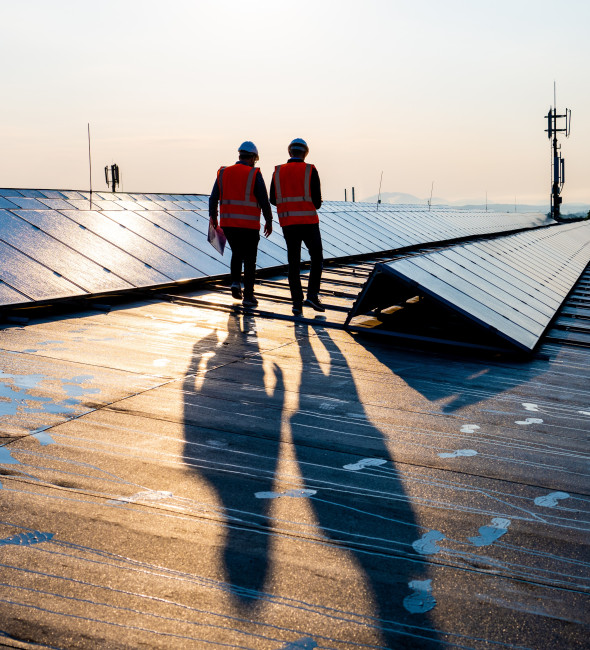In most sectors, greenhouse gas (GHG) emissions come from the combustion of fossil fuels. In these cases, electrification and the direct use of renewable energy are prime solutions for decarbonization. Even though eliminating energy-related emissions will make an important contribution, process emissions resulting from chemical reactions in various industrial processes make up a substantial part and will also need to be tackled.
Industrial process emissions cannot be tackled by decarbonizing the energy supply and need new solutions and methods
Many industrial subsectors involve the chemical processing of raw materials, such as iron ore or limestone. That process typically releases carbon from the raw material into the atmosphere, resulting in carbon dioxide (CO2) emissions. These emissions, commonly referred to as process emissions, cannot be eliminated by decarbonizing the energy supply.
Cement, steel and chemicals are responsible for about 70% of industrial CO2 emissions. A significant share of those emissions are process emissions, and plastics production is one of the major emissions sources in the chemicals industry. Thus, the adoption of alternative methods to create cement, steel and plastics while lowering industry’s climate impact is crucial. Pathways toward this goal vary depending on the product and all are in different stages of technological development.
For some industrial processes, such as steel production, switching to carbon-free feedstocks like green hydrogen is a viable solution. For other processes, such as cement production, few scalable options exist today. Carbon capture and storage (CCS) is likely to play an important role. CCS could also become crucial for the decarbonization of industrial plants with long lifespans, or those that are located in geographies with limited ability to produce or obtain carbon-free feedstocks.
Most solutions to mitigate process emissions need to be commercialized and coupled with the development of appropriate infrastructure
Most of the novel technologies that eliminate process emissions are still early in their development and will need accelerated scaling and commercialization. However, their progress will depend on access to finance, effective policies and increased demand for low-carbon industrial products.
In addition to the adoption of novel technologies, the development of new infrastructure — for example, to transport and store captured carbon and green hydrogen — will be an important step. The supply of green hydrogen itself must be ensured while making it cost-competitive with fossil fuels and feedstocks.
Because the manufacture of steel and cement generate high levels of process emissions, it is important to monitor each industries’ progress in lowering these levels. Green hydrogen production must also be tracked, given its expected role in mitigating process emissions in industry.
Watch a recording of this high-level discussion on the opportunities to reduce emissions from industry, including lowering demand for conventionally produced materials, switching to clean energy, and applying new technologies and solutions.


